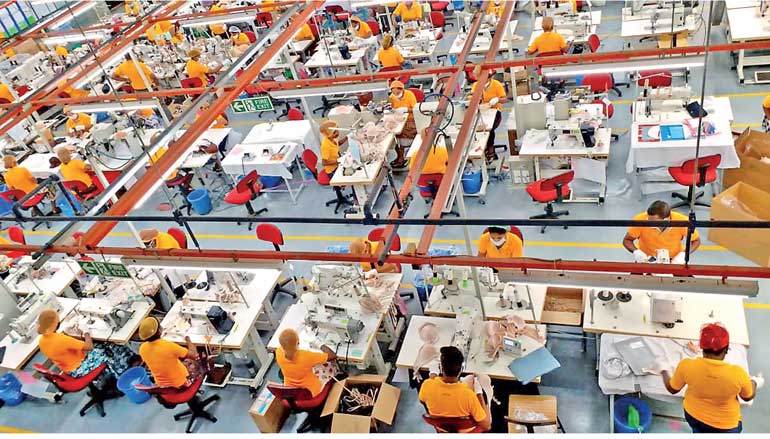Sunday Apr 20, 2025
Sunday Apr 20, 2025
Friday, 24 January 2025 00:06 - - {{hitsCtrl.values.hits}}


JAAF Secretary-General Yohan Lawrence
Sri Lanka’s export earnings from apparel in 2024 reached $ 4.7 billion, recording a year-on-year growth of nearly 5%, according to the Joint Apparel Association Forum (JAAF). Adding the country’s direct exports of textiles takes the overall export value to just over $ 5 billion. This underscores the resilience of the country’s textile and apparel industry amidst both local and global challenges.
Growth analysis
While these positive reports have been welcome news for stakeholders across the apparel industry. If 2019 was used as a baseline—the last “normal” pre-pandemic and economic crisis year—Sri Lanka’s apparel export in 2024 communicates a more circumspect account for in 2019 Sri Lanka managed to export $ 5.3 billion resulting in last year’s exports reporting 10.3% shortfall. These stark facts highlight the need for more concentrated interventions to reclaim lost ground and chart a course to match and exceed the pre-pandemic export trajectory that Sri Lanka was on. However, key patterns in market performance reveal promising signs:
Eravur Textile Zone
The JAAF emphasises that localised fabric production remains critical for the industry’s long-term recovery and competitiveness. Located on over a span of 300 acres, the zone has been designed and will provide opportunities for multiple verticals relating to the manufacture of textiles. Manufacturers can establish textile dying, washing, knitting, weaving and other associated plants in this dedicated area. This landmark project can save significant foreign exchange, reduce production lead times, and enhance the value proposition of Sri Lankan exports to global buyers increasingly demanding traceability and sustainability.
“The Eravur Textile Zone is more than just an initiative; it’s a lifeline for the industry. Localising fabric production is crucial to increasing competitiveness and meeting the demands of global markets,” said JAAF Secretary-General Yohan Lawrence.
Trends and insights
Analysis of growth trends over the past five years indicates that while the sector has shown remarkable resilience, its trajectory reflects a gradual recovery process and the pandemic-induced dip in 2020 saw exports fall to $ 4.1 billion, a 22% drop from 2019. Exports peaked temporarily in 2022 as markets overestimated the COVID recovery, only to see setbacks in 2023 due to global inflationary pressures and reduced consumer spending. The 5% growth in 2024, reflects also the downward pressure on pricing that the industry is currently seeing.
JAAF underscores the importance of continued collaboration between the industry and Government stakeholders. Key policy actions—such as enhanced market access, enabling infrastructure projects like the Eravur Textile Zone, transparency and predictability with electricity pricing, and the easing operational bottlenecks as those currently experienced in the Colombo Port—are paramount for long-term growth.
The recent adjustment to electricity tariffs is a welcomed step by the industry, particularly as Sri Lanka’s energy costs have been higher compared to competitor countries. JAAF has long advocated for the independence of the Public Utilities Commission of Sri Lanka (PUCSL) to ensure the country adopts the most cost-effective generation mix, passing on these savings to consumers through a fair, cost-reflective tariff.
Sri Lanka and Indonesia have jointly submitted an application to the UK DCTS authorities for the cumulation of Indonesian fabrics with Sri Lanka. If approved, this would allow apparel made in Sri Lanka using Indonesian fabric to access the UK market duty-free.
“Reclaiming pre-2019 levels and setting higher benchmarks is a challenge that requires a collective effort,” Lawrence added. “Strategic investments and reforms can position Sri Lanka’s apparel sector to cross $ 6 billion in export earnings, strengthening its reputation as a global leader in quality and ethical manufacturing.”
As Sri Lanka aligns itself with global sustainability and traceability mandates, the opportunity to grow remains significant, provided strategic actions are undertaken to support both large and emerging players within the industry.